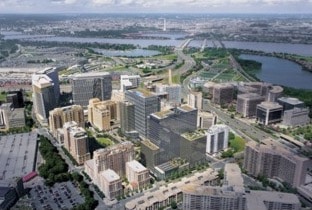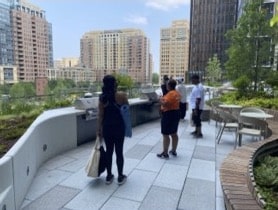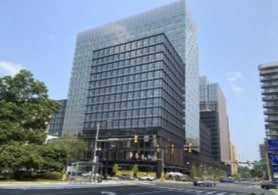A wise South African, Magnus Heystek, has written, “where capital isn’t welcome, it packs up and goes elsewhere.” Amazon’s quest for a second corporate headquarters is a case study that proves Heystek’s theory.
Six years ago, the Seattle-based e-commerce giant set out to find a venue for a needed second headquarters. Dozens of US cities stepped up, salivating at the prospect of $2 billion in investment and thousands of high-paying jobs. A bidding war ensued with contestants offering subsidies and tax breaks. Amazon narrowed the field by specifying its requirements — proximity to major markets, good infrastructure, and access to higher education. In 2018 Amazon made its decision, dividing the prize between Queens in New York City and the Washington, DC suburb of Arlington, Virginia.
Arlington cheered while New York was conflicted. Progressive Democratic congresswoman Alexandria Ocasio-Cortez, whose district is in Queens, vigorously protested. “Why,” she asked, “should corporations that contribute nothing to the pot be in a position to take billions from the public?” She said that despite huge profits, Amazon had paid no federal income tax in 2018. Other Democrats including the New York City mayor and state governor had worked hard to attract Amazon and offered over $1 billion in incentives.
Amazon concluded that it wasn’t wanted, packed up and departed. It was a move Ocasio-Cortez applauded, saying “everyday New Yorkers and their neighbors defeated Amazon’s corporate greed, its worker exploitation and the power of the richest man in the world (then CEO Jeff Bezos)”.
Fast forward four years. Amazon has completed phase one of its Arlington project and local officials are jubilant. Saying there’s a big multiplier effect from the investment, business advocate Tracy Gabriel says the initial $2 billion is morphing into “$12-billion of (additional) projects.” Surveying the proliferation of construction now underway, an Arlington politician speaks of a “renaissance” in a once run-down area. There are thousands of new apartments, an additional subway station and a planned pedestrian bridge to Washington’s Reagan National Airport. The multiplier on jobs extends from 8,000 at Amazon to 25,000 overall.

George Washington University economist Christopher Leinberger calls “the Amazon project the economic development model of the century thus far.” Arlington, he says, is not paying a dime while Boeing, Raytheon and a university training center are following Amazon into the county.
While Arlington is not providing cash incentives, Virginia is. State subsidies could reach $500 million.
Amazon’s investment is not without problems. Layoffs in the tech sector and the work-from-home movement have derailed plans for a third building originally presented as the centerpiece of the project. Amazon’s call for employees to come in three days a week is being resisted. Despite incentives that include terrace barbecuing, multiple cafes, recreation spaces and allowing employees to bring pets, Amazon is likely to have trouble filling the twin 22-story buildings.


Work from home is driving down commercial property values. Arlington has a high 22% vacancy rate but home prices and rents continue to rise. Traffic is certain to become a big issue.
And what about Long Island City on the East River overlooking Manhattan? Development there is progressing despite the loss of Amazon. High rises are under construction and 10,000 private sector jobs have been added over the past decade. But there is no boom comparable to Arlington. In parts of Long Island City the commercial vacancy rate is 48% and there is a large inventory of available offices.
In the 1920s shortly after the Bolshevik revolution Austrian economist Ludwig von Mises wrote that “the champions of socialism call themselves progressives, but they recommend a system which is characterized by rigid observance of routine and by a resistance to every kind of improvement.” That may be applicable to New York’s progressives.
Capital goes to where it is wanted. Also, it’s one thing to promise new jobs, quite another to create them. Business requires solid private property rights, rule of law, safety, and a favorable regulatory environment.
The message from Amazon’s quest for a new headquarters is that a big high-tech investment does indeed create jobs, economic growth and increased tax revenue.
The views of the writer are not necessarily the views of the Daily Friend or the IRR.
If you like what you have just read, support the Daily Friend.


